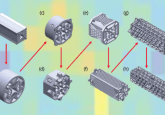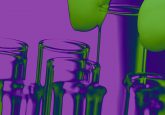Bioanalysis Zone meets 3DMedNet: 3D printing in the bioanalytical laboratory

In this interview from 3DMedNet, Laura Mercolini (Alma Mater Studiorum, University of Bologna, Italy) discusses how the latest 3D printing techniques and technology are enhancing bioanalytical research: from sampling to sample handling, pretreatment and instrumental analysis.
Laura Mercolini, University of Bologna (Italy)
“I am Laura Mercolini, Associate Professor in Medicinal Chemistry at the University of Bologna (Italy) and Head of the research group of Pharmaco-Toxicological Analysis (PTA Lab) at the Department of Pharmacy and Biotechnology (FaBiT). My research activity is currently focused on the development of innovative strategies for the analysis of psychotropic compounds in biological and non-biological samples and with the implementation of advanced technologies for sampling, sample handling and pretreatment. My research is embodied in more than 70 peer-reviewed papers and more than 200 communications to national and international congresses, meetings and workshops. The expertise of my research group is in the tailoring and implementation of cutting-edge analytical platforms with high degree of miniaturization and automation.”
Could you explain your role and give an overview of how you utilize 3D printing technologies in your laboratory?
In my research group we develop bioanalytical solutions to be applied, amongst others, to clinical settings, in the forensic field and for anti-doping analysis, thus we study new approaches with high applicability that can be widely exploited. On the one hand, multidisciplinary collaborations with stakeholders of various nature are crucial in our activities, allowing us to identify the main scientific problems to focus on.
“3D printing represents a versatile, flexible and virtually unlimited approach to combine and hyphenate in a virtuous and advantageous manner for every single phase of the bioanalytical workflow.”
The technological component plays a fundamental role as complex problems require non-classical solutions. Therefore, the methodologies developed at the PTA Lab are designed ad hoc to address and solve such issues through the implementation of cutting-edge technologies and innovative approaches. In this context, 3D printing is of considerable interest, as its high versatility and virtually infinite range of possibilities make it a promising and fully applicable resource.
In designing analytical methods for therapeutic drug monitoring and drugs of abuse monitoring, what are the main challenges? How could 3D printing help to overcome these challenges?
Analytical platforms for clinical and forensic monitoring have the key requirement to be able to be exploited at high throughput, with an effective cost and time reduction, given the high number of samples that must be processed in a short time. The possibility of automating processes and being able to combine in a single platform the different steps of the bioanalytical process (sample handling, pretreatment and analysis) in a seamless and online way could give tremendous added value to all routine practices. In fact, an effective protocol that can be operated quickly and at low cost is a protocol that can be applied more frequently. We know that, for example in therapeutic drug monitoring, frequent analyses result in better therapy personalization, increased subject compliance, reduced side effects and ultimately in an overall improvement in the patient’s quality of life. In this scenario, 3D printing, when properly designed, potentially represents every connection point between the process nodes, capable of limiting operator intervention, speeding up processes and improving reproducibility. One of the potentials of 3D printing is to make even basic protocols extremely innovative and more performing, creating cutting-edge combinations through the implementation of modules tailored ad-hoc and at low cost.
How is 3D printing aiding the development of new analytical methods based on microsampling coupled with mass spectrometry?
3D printing represents a versatile, flexible and virtually unlimited approach to combine and hyphenate in a virtuous and advantageous manner for every single phase of the bioanalytical workflow: from sampling to sample handling, pretreatment and instrumental analysis. By tailoring special, ad hoc interfaces, it is possible to create connections and supports that were unthinkable up to now, expanding the possibilities and areas of application in a terrific way.





